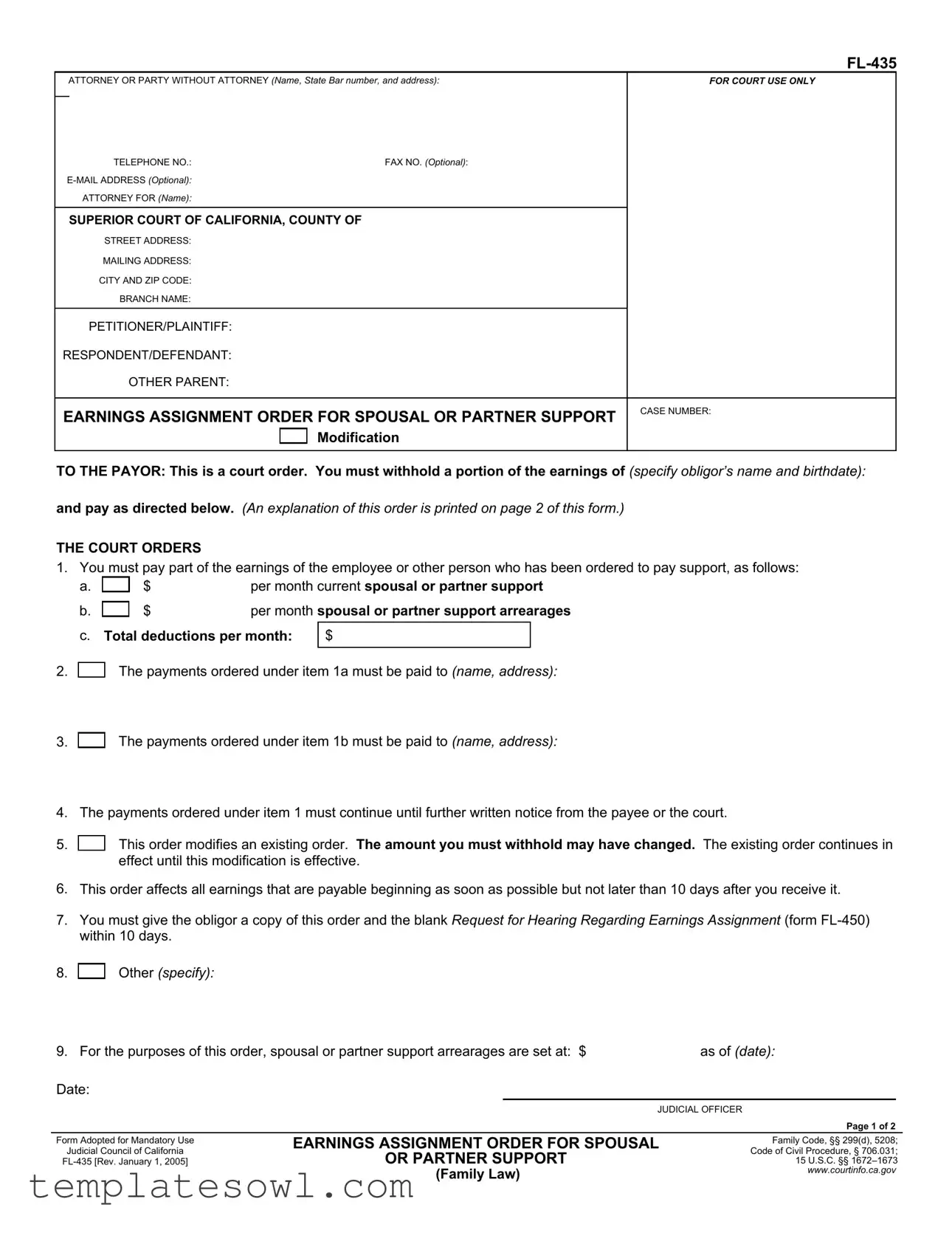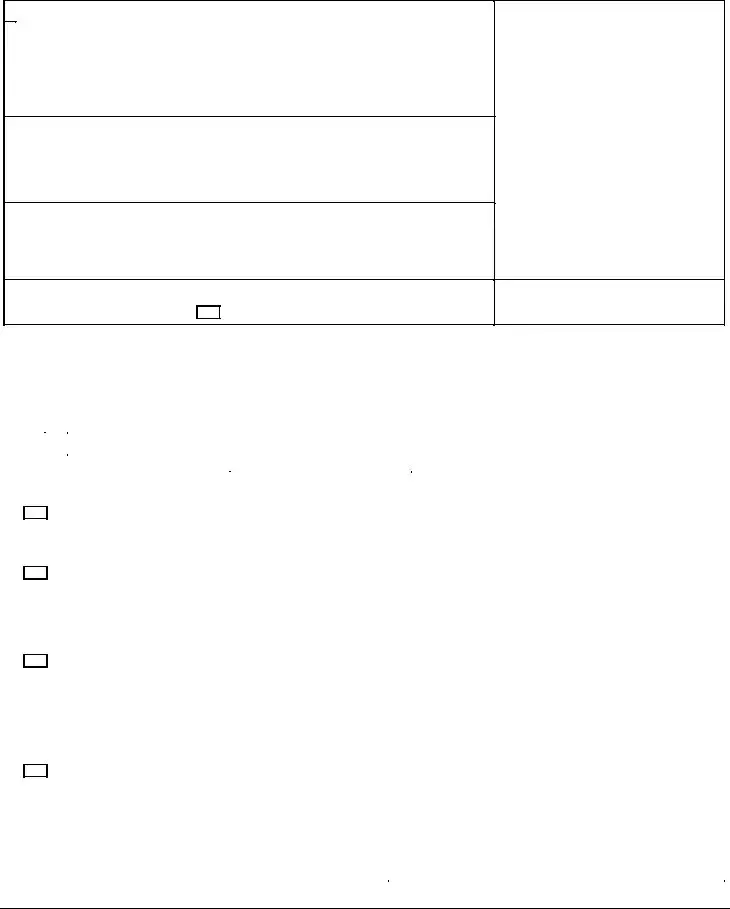What is the FL-825 form and when do I need to use it?
The FL-825 form, formally known as the Earnings Assignment Order for Spousal or Partner Support, is used in California to direct a payor—typically an employer—to withhold a portion of an obligor's earnings. This order is appropriate in cases where one party is required by a court to pay spousal or partner support. The form outlines the amount owed and ensures that the payee receives the support they need consistently. You would use this form after a court has determined the support obligations for one party based on family law statutes.
Who is considered an obligor and an obligee?
The obligor is the person ordered by the court to pay support. This individual is the one whose earnings will be withheld as specified in the order. The obligee, on the other hand, is the person or agency entitled to receive the support payments. Understanding these roles is crucial, as it determines who is financially responsible and who benefits from the support amounts withheld.
What types of earnings are subject to withholding under this order?
The FL-825 form covers a wide range of earnings. This includes wages, salary, bonuses, commissions, retirement pay, and payments from independent contractors. Other sources of income, like dividends, rents, and payments due to contracts, are also affected. In essence, any compensation received for work or services rendered may be subject to withholding based on this court order.
How long does the payment obligation last?
The obligation to pay reflects on the FL-825 form and continues until the court receives a new order indicating changes or the party receiving support no longer requires it. This means that the withholdings will persist until there is further written notice from either the payee or the court, signifying that a modification or cessation of payments is warranted.
What should the payor do upon receiving the order?
Once a payor, typically the employer, receives the FL-825 form, they must act promptly. The payor should withhold the specified amounts from the obligor's pay no later than 10 days from receipt of the order. Additionally, they are required to send these withheld amounts to the designated payees within the specified timeframe. It's essential to keep accurate records when making these payments, as failure to do so could result in significant liabilities.
Can the obligations under this order change?
Yes, the amounts specified in the FL-825 form can change. If there is a modification to the existing support order, this must be reflected in a new FL-825 form. The existing support order remains in effect until the modification is formally recognized by the court. It is critical for both the obligor and the obligee to stay informed about any changes that may affect their financial responsibilities.
What happens if the obligor changes jobs?
If the obligor changes their employer, they have a responsibility to inform the payees listed in the FL-825 form. The obligor must provide the new employer's details to ensure that support payments continue seamlessly. This helps prevent interruptions in support and ensures compliance with the court’s order.
Are there restrictions on how much can be withheld from an obligor's wages?
Indeed, there are limits to how much money can be withheld. Generally, state and federal laws allow withholding of up to 50 percent of an obligor’s disposable earnings, which are earnings remaining after mandatory deductions like taxes and social security. However, federal law caps the maximum withholding at 65 percent of disposable earnings. It’s crucial for payors to be aware of these limits to avoid legal repercussions.
What steps can an obligor take if they believe the order is incorrect?
If an obligor believes that the Earnings Assignment Order is incorrect or unjust, they can request a hearing by submitting a Request for Hearing Regarding Earnings Assignment (form FL-450). It’s important to act quickly, as the request must be filed within 10 days of receiving the FL-825 form. Professional legal guidance is advisable in these cases to navigate the court system effectively.


